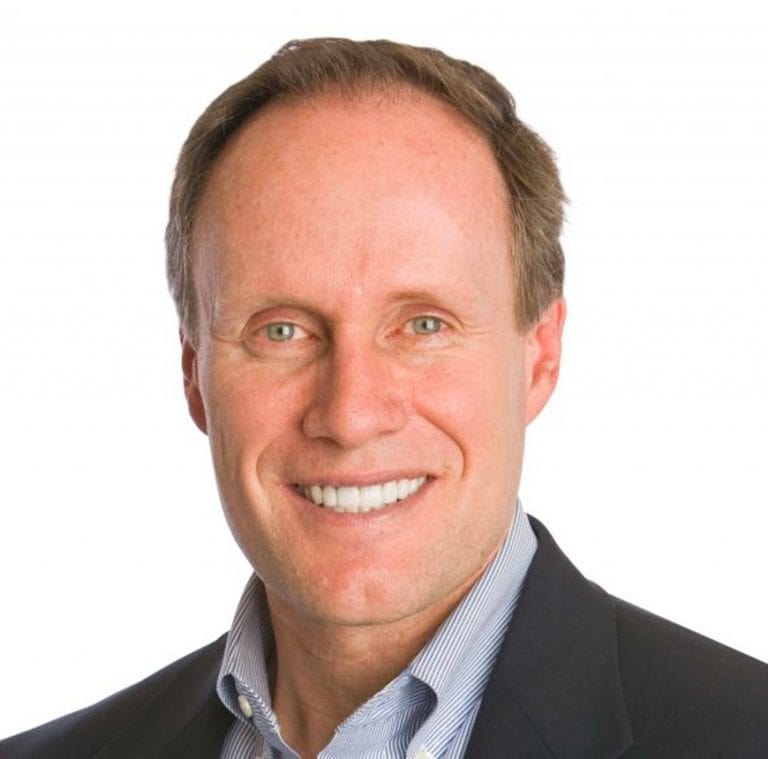Share:
Stephen M. R. Covey, Contributor

What motivates people? In my work with leaders around the world, from Fortune 100 companies to family-owned businesses, there’s a very clear common thread: a high-trust environment creates the ideal conditions for human motivation like nothing else.
What is it that great leaders and organizations do to deliberately inspire this kind of culture? I’ve spent the last 20+ years with leaders and organizations to understand how to create high-trust teams and have found two consistent leadership themes.
Since trust motivates employees, the first job of a leader is to inspire trust. Leaders themselves must be trustworthy. They do this by who they are—their character and competence—and by the behavior they model. The second job of a leader, equally as important, but woefully under-leveraged, is to extend trust.
This extension of trust—being trusting—is the key to meaningful, self-perpetuating motivation.
I’ll explore both why that is and what you can do with it.
Who Can You Trust?
As Henry Stimson once observed, “The chief lesson I have learned in a long life is that the only way you can make a man trustworthy is to trust him; and the surest way to make him untrustworthy is to distrust him.”
Stimson oversaw military efforts for two presidents during World War II; he understood much about human motivation under some of the most difficult circumstances.
Discerning what really motivates employees has been a focus for leaders and human resources professionals for as long as I can remember, with the debate often focused on whether it’s better to use the carrot or the stick.
The problem with the carrot-and-stick concept, however, is that it’s inherently transactional and only provides limited, short-term results. Our world today is not transactional.
Nobody wants the “stick,” and the ”carrot” just conditions a dependency on more carrots—and someone else is always willing to offer more carrots.
This false dichotomy ignores something people want more than carrots, and something that is capable of producing far more creativity, speed, loyalty, and committed performance: Trust.
I’m reminded of the approach modeled by Hugo Boss CEO Daniel Grieder—hired to reignite fortunes at the high-end fashion house—when he first met with his top 100 leaders.
He told them together how vital trust would be to their success, and that they had a choice: they could take the next year and get to know each other and decide whether or not they could trust each other, or they could start by trusting each other now.
Then he said to these top 100 leaders, “Team, I want you to know something: I trust you. Please trust me, too! Trust is how we’ll create a new way of working together and a new culture.”
This was more than just words—it was backed up with actions. At the end of the second year of his tenure, Daniel invited me to Germany to speak with him and his team on trust.
I witnessed firsthand how starting with trust had an incredible impact on how his company was able to operate. By the end of year two, they were already achieving the metrics of year four on their five-year strategic plan!
You can’t “carrot or stick” the level of motivation required to operate at that level, especially at scale. Last year, the firm extended his tenure as CEO to reward his “tremendous progress.”
Grieder’s approach stands out because we live in a low-trust world.
Leaders say they trust employees, but their teams aren’t convinced. According to PwC, 86% of executives say they highly trust their employees, but just 60% of employees actually feel highly trusted.
There are plenty of reasons for this trust deficit: since the pandemic, the global economy has felt a lot like a rollercoaster, policy shifts and artificial intelligence tools are making people anxious about job security, and our public discourse has become coarse.
Motivation and Our Productivity Crisis
Academics and consultants obsess over how to motivate employees not for touchy-feely reasons but because motivated people drive meaningful, sustainable productivity, which underpins our standard of living.
From today’s vantage, we see that U.S. labor productivity—output per labor hour—has been in long-term decline. Productivity growth rates have been below average since 2005, reversing the above-average growth years of the late 1990s and early 2000s (Figure 1).
This deceleration has cost the U.S. economy a cumulative $10.9 trillion, cutting output per worker by $95,000, the Bureau of Labor Statistics (BLS) reports.
Figure 1: Muted Productivity Raises Question of How to Motivate Workers
Labor productivity growth: annual percent change, non-farm business sector (1994-2018)
Source: U.S. Bureau of Labor Statistics, April 2021
The BLS report asks why innovations from higher-productivity firms have not translated into stronger economy-wide productivity gains: “Many of the firms that have been innovating have not similarly been able to scale up and hire more employees commensurate with their improved productivity.”
Does that mean there’s a lack of capable people, or is there a gap in organizations’ ability to attract, retain, and motivate capable people?
Considering the latter, I would submit that the societal decline in trust we’ve experienced is not unrelated. Low trust is perhaps the most toxic restraining force to motivation, especially with those who are the most capable.
Bain & Co. also studied the issue. The consulting firm suggested the problem was that too many companies confuse efficiency with productivity.
Efficiency is about doing the same with less, whereas productivity is about doing more with the same. It’s a subtle but important difference.
Efficiency implies job cuts and cost cutting and tends to apply a “stick” mindset to motivate, whereas a productivity approach is more aspirational and tends to imply more of a “carrot” mindset to motivate.
So, which is more effective, efficiency or productivity?
The answer isn’t one or the other, it’s both. How? I can tell you emphatically that a high-trust mindset enables both incredible efficiency and different-in-kind productivity.
There are examples of this everywhere, but we’ve all experienced it. “Sticks” can’t sustain this, and no amount of “carrots” can buy it.
High-trust organizations attract and retain the best people (and bring out the best in people). And those people become inspired.
They collaborate and innovate more effectively in ways “scientific management” can’t explain—and the data on this is overwhelming. In a 26-year assessment of organizations characterized by high-trust cultures, those companies outperformed the market by a factor of 3.68x.
The Productivity-Trust Connection
To get to the root of the productivity problem, Bain polled more than 300 top executives at large companies globally and undertook two dozen in-depth organizational audits. The goal was to identify actions “companies can take to unleash the productive power of their teams and accelerate profitable growth.”
The study had three main findings:
- Employees want to be productive, but employers get in the way: more than 20% of productivity—more than a day each week for every employee—is lost to what Bain calls “organizational drag,” employees stuck doing pointless tasks, such as too many meetings or process for process’ sake (often markers of a low-trust culture).
These activities distract them from doing what’s most important. The solution is aligning resources to the greatest value. The trust gap between employees and leaders often obscures the reality of what’s really effective and what’s not.
In fact, in low-trust organizations, employees will often feel motivated to keep that reality as obscure as possible. This has become abundantly apparent in the ongoing debates on the effectiveness of remote and hybrid work. - Companies have too few “difference makers”: Bain’s findings suggest that only 15% of workers are talented—”star players” who can have an outsized effect on results—but that they’re rarely assigned to the correct business-critical roles. We see how stars can be bogged down in low-trust activity. I have found that when employees and leaders have mutual trust, stars are naturally given room to expand and shine in the roles where they can have the most impact. Furthermore, as we excel at giving trust to others, we often find that stars emerge at a rate that can far exceed 15%.
- Most employees don’t feel inspired: Bain found most employees aren’t invested enough to bring their ingenuity and creativity to work. By contrast, inspired employees are 125% more productive than those who are merely satisfied.
Put another way, one inspired worker produces as much as 2.25 times the output of a satisfied one. The lesson is to stop trying to manage employees and instead lead them.
As I wrote in my book Trust & Inspire, the old Command-and-Control approach no longer works. Instead, believe your people are creative, collaborative, and full of potential (they are all these things) so they’re inspired to do their best work. To be blunt, stop managing for efficiency and, instead, inspire to boost productivity.
Bain found that the payoff of inspiring employees is enormous, boosting productivity by more than 40% vs. average firms, producing faster growth and margins as much as 50% above peers. Trust is a performance multiplier for collaboration, innovation, and engagement—the qualities of truly great companies.
Becoming a Trust & Inspire Leader
Early in my career, I sought an assignment as a commercial real estate leasing agent at my employer, Trammell Crow Co. I failed my first 12 field-office interviews.
By all accounts, I was told I was not the “star player” I wanted to believe I was. But on my 13th attempt, my potential new boss, John Walsh, decided to trust me.
He decided I might have greatness inside me and had the courage to go first and tell me he trusted that I could get the job done. In turn, I felt humbled, grateful, and motivated to live up to that trust in my capabilities and determined to reward his trust with hard work and great results.
He inspired me. My guess is many of you, at some point, have experienced a trusting leader like this as well.
So, how can a leader inspire? Consider five fundamental beliefs that such a leader operates with (Figure 2) that can help:
Figure 2: Five Mindset Changes That Help a Leader Inspire
Source: Stephen M. R. Covey, Trust & Inspire, FranklinCovey
When you’re trusted, you become motivated to grow and develop new skills and competencies to deliver on the faith placed in you. Trust also has a key fringe benefit—it comes back to you because people tend to reciprocate trust.
Of course, there’s risk in trusting—but there’s also risk in not trusting. In fact, not trusting is often the greater risk. So we use our good judgment and extend “smart trust” rather than blind trust.
Getting to Smart Trust
Operating at the Speed of Trust starts with leaders exhibiting character and competence, modeling good behaviors first, and showing they are deserving of trust and able to extend trust.
Character includes integrity and intent, shown in Figure 3, along with competence, which incorporates your capabilities and results.
Figure 3: The 4 Cores of Credibility and the 13 Behaviors
Source: Stephen M.R. Covey, The Speed of Trust, FranklinCovey
Perhaps the most important aspect of establishing trust is to explicitly tell people they are trusted, saying it out loud and being specific—a behavior listed among the 13 Behaviors above as Extend Trust. (John Walsh did this for me—try it, it’s powerful!)
Two additional behaviors from the 13 that both operationalize and make trust “smart” are Clarify Expectations and Practice Accountability. These behaviors are something we perform with the other person, not to them or even for them.
Instead, we involve them. I don’t “dictate expectations,” because, while I know things they don’t, they also know things I don’t, so we collaborate together, connecting what’s needed and what’s possible. We establish a mutually agreed-upon process for accountability.
What does success look like? When do we follow up? What resources are available? What are the consequences of achieving the results—or not?
All of this requires trust, believing in ourselves, and believing in each other. It enables us to come to an agreement, and that agreement governs.
Does this approach sacrifice control? I’ve found you actually have far more control with this approach because you are working in reality, not “spin,” and because the agreement you establish together creates far greater clarity and mutual commitment.
Trust Me, Take the Leap!
For Smart Trust, honesty is vital. Leaders must be alert for unhelpful behaviors like sandbagging, or team members downgrading expectations in the hope of beating goals.
For leaders looking to take the leap, here’s a simple checklist:
- Start by building trust with one relationship.
- Build trust by degrees. It’s not “all or nothing.”
- Don’t let negative experiences with one influence your treatment of others.
- Start with trust until proven otherwise.
- Language matters, choose your words intentionally.
- Tell people you trust them and why you trust them.
- Balance the risk of trusting with the risk of not trusting (often the greater risk).
- Take calculated risks.
- Be clear and specific about expectations and desired results, and be informed and influenced by others’ perspectives.
- Collaboratively agree to a process of accountability and how to report back.
- Learn from your mistakes.
Cultures tend to be self-reinforcing.
During the pandemic, companies that already trusted employees extended more trust, believing workers would remain productive while working remotely. Companies with low trust took a different tack, such as installing keystroke-tracking software to track activity, eroding trust.
As humans, we are wired to see risk. We’ve all been burned by a person who disappointed us, let us down, or betrayed our trust.
But we tend to set policies and procedures to control the unworthy few rather than the trustworthy majority. There is a bigger risk and a real cost to not trusting that most leaders do not factor in.
When we extend trust, we get back creativity, inspiration, passion, and commitment. Trust attracts talent, retains it, engages it, inspires it, and brings out the best in people.
What is the risk of not extending trust? It’s often a greater cost, which goes unmeasured. Leaders then wonder why there is a lack of motivation, engagement, and energy.
At a time when there’s a need to move so fast when things are changing and being disrupted, if you wait until people prove that they can be trusted, you’ll wait too long. It’s a better starting point for leaders today to start from the premise of trusting until proven otherwise, not the other way around.
Additionally, things aren’t slowing down. If you’re not doing this, start now. If you’re doing it, follow Daniel Grieder’s lead and do more.
Trust is the foundation of innovation and creativity because, when there is trust, people are not afraid to take risks, make mistakes, learn, and grow. Trusting team members to make mistakes, learn, and grow is vital for success. As Jeff Bezos said, “Failure and invention are inseparable twins.”
The potential payoff is huge: in a high-trust culture, people are 32 times more likely to take a calculated risk and 11 times more likely to innovate, according to an LRN study. In a low-trust culture, they won’t take risks, they will disengage, and your company will soon struggle.
Take a leap of faith, and lead with trust! Trust me, the odds are stacked in your favor.

Stephen M.R. Covey, trust expert, leadership development pioneer, and bestselling author Stephen M.R. Covey (“Trust & Inspire: How Truly Great Leaders Unleash Greatness in Others” and “The Speed of Trust: The One Thing That Changes Everything”) is the Global Leader, FranklinCovey Global Trust Practice and the Content Expert for FranklinCovey’s “Leading at the Speed of Trust” and “Working at The Speed of Trust” courses. Under his direction, Covey Leadership Center became the largest leadership development company in the world. He is a globally-sought-after speaker and advisor on trust, leadership, ethics and collaboration.


